Raja Ampat
UNESCO World Heritage Sites
 Raja Ampat is an archipelago located off the northwest tip of Bird’s Head Peninsula on the island of New Guinea, in Indonesia’s Southwest Papua province. It comprising over 1,500 small islands, cays, and shoals surrounding the four main islands of Misool, Salawati, Batanta, and Waigeo, and the smaller island of Kofiau. The Raja Ampat archipelago straddles the Equator and forms part of Coral Triangle which contains the richest marine biodiversity on earth.
Administratively, the archipelago is part of the province of Southwest Papua. Most of the islands constitute the Raja Ampat Regency, which was separated out from Sorong Regency in 2004.
The regency encompasses around 70,000 square kilometres (27,000 sq mi) of land and sea, of which 7,559.6 km2 constitutes the land area and has a population of 47,885 (as of 2018). This excludes the southern half of Salawati Island, which is not part of this regency but instead constitutes the Salawati Selatan District of Sorong Regency.
Raja Ampat is an archipelago located off the northwest tip of Bird’s Head Peninsula on the island of New Guinea, in Indonesia’s Southwest Papua province. It comprising over 1,500 small islands, cays, and shoals surrounding the four main islands of Misool, Salawati, Batanta, and Waigeo, and the smaller island of Kofiau. The Raja Ampat archipelago straddles the Equator and forms part of Coral Triangle which contains the richest marine biodiversity on earth.
Administratively, the archipelago is part of the province of Southwest Papua. Most of the islands constitute the Raja Ampat Regency, which was separated out from Sorong Regency in 2004.
The regency encompasses around 70,000 square kilometres (27,000 sq mi) of land and sea, of which 7,559.6 km2 constitutes the land area and has a population of 47,885 (as of 2018). This excludes the southern half of Salawati Island, which is not part of this regency but instead constitutes the Salawati Selatan District of Sorong Regency. 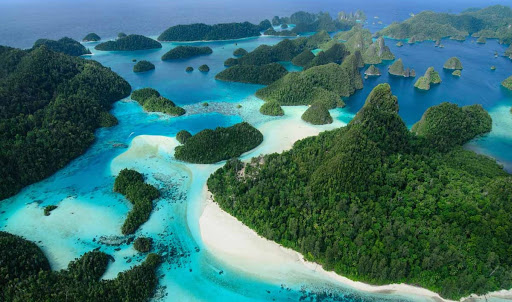 Geography
Geography
The oceanic natural resources around Raja Ampat give it significant potential as a tourist area. Many sources place Raja Ampat as one of their top ten most popular places for diving whilst it retains the number one ranking for underwater biodiversity.
According to Conservation International, marine surveys suggest that the marine life diversity in the Raja Ampat area is the highest recorded on Earth. Diversity is considerably greater than any other area sampled in the Coral Triangle composed of Indonesia, Malaysia, Philippines, Papua New Guinea, Solomon Islands, and East Timor.
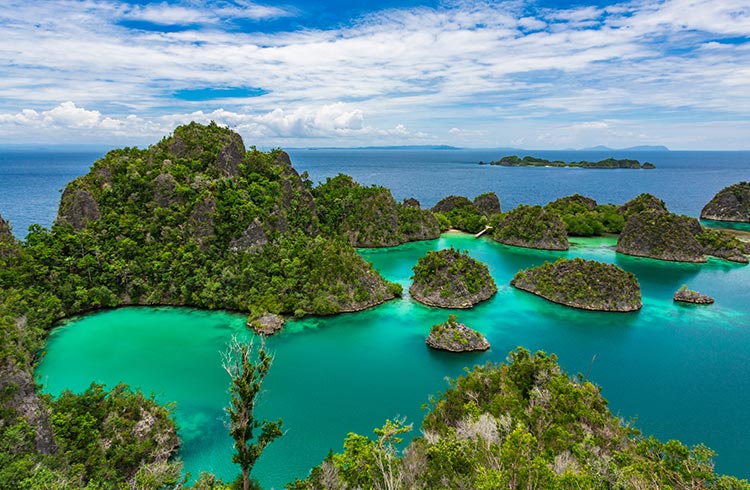 The Coral Triangle is the heart of the world’s coral reef biodiversity, making Raja Ampat quite possibly the richest coral reef ecosystems in the world.
The Coral Triangle is the heart of the world’s coral reef biodiversity, making Raja Ampat quite possibly the richest coral reef ecosystems in the world.
The area’s massive coral colonies along with relatively high sea surface temperatures, also suggest that its reefs may be relatively resistant to threats like coral bleaching and coral disease, which now jeopardize the survival of other coral ecosystems around the world. The Raja Ampat islands are remote and relatively undisturbed by humans.
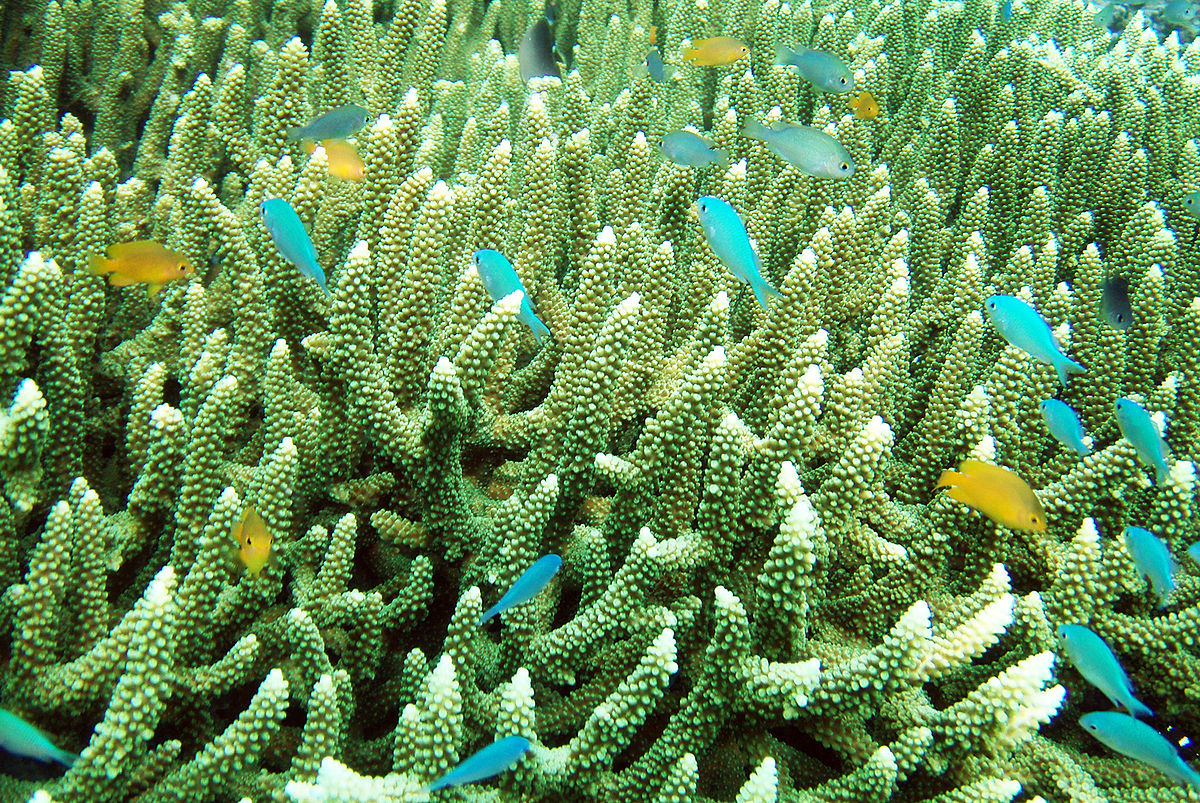 The crown-of-thorns starfish eats Raja Ampat’s corals, and the destruction this causes among reefs has posed a threat to tourism. The crown-of-thorns starfish, which “can grow as big around as a trash-can lid”, has proliferated due to increasing nitrogen in the water from human waste, which in turn causes a spike in phytoplankton on which the starfish feed.
The crown-of-thorns starfish eats Raja Ampat’s corals, and the destruction this causes among reefs has posed a threat to tourism. The crown-of-thorns starfish, which “can grow as big around as a trash-can lid”, has proliferated due to increasing nitrogen in the water from human waste, which in turn causes a spike in phytoplankton on which the starfish feed.
In 2019, local divers had begun the task of reducing starfish populations by injecting the starfish with a 10% vinegar solution; the dead starfish can then be eaten by local fish.
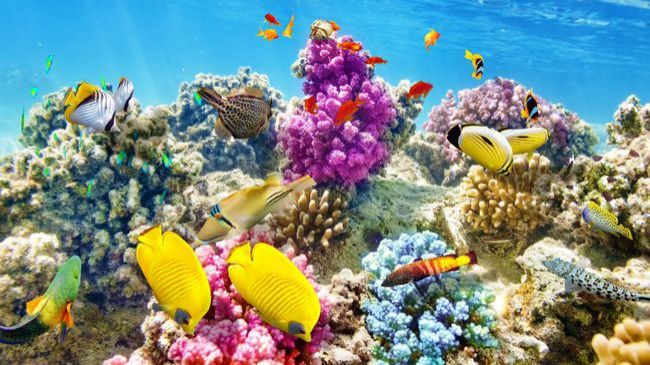 The high marine diversity in Raja Ampat is strongly influenced by its position between the Indian and Pacific Oceans, as coral and fish larvae are more easily shared between the two oceans. Raja Ampat’s coral diversity, resilience, and role as a source for larval dispersal make it a global priority for marine protection.
The high marine diversity in Raja Ampat is strongly influenced by its position between the Indian and Pacific Oceans, as coral and fish larvae are more easily shared between the two oceans. Raja Ampat’s coral diversity, resilience, and role as a source for larval dispersal make it a global priority for marine protection.
1,508 fish species, 537 coral species (a remarkable 96% of all scleractinia recorded from Indonesia are likely to occur in these islands and 75% of all species that exist in the world), and 699 mollusk species, the variety of marine life is staggering.[9] Some areas boast enormous schools of fish and regular sightings of sharks, such as wobbegongs.
Raja Ampat Islands have at least three ponds containing harmless jellyfish, all in the Misool area.
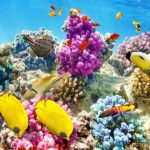
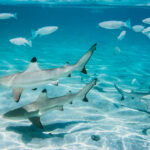
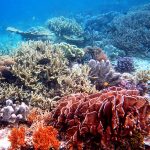
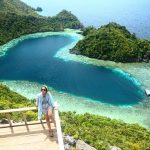
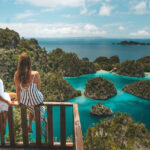
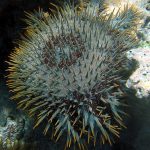
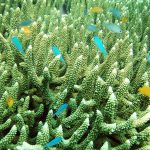

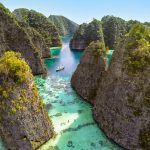
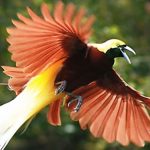
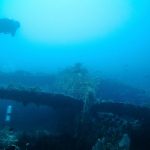
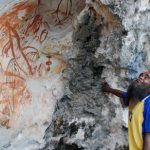

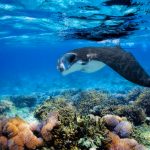
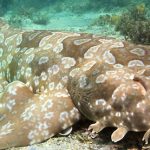

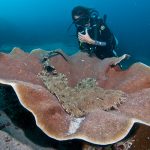

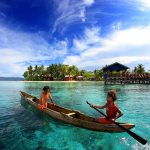

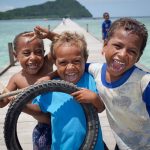
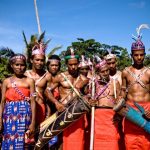













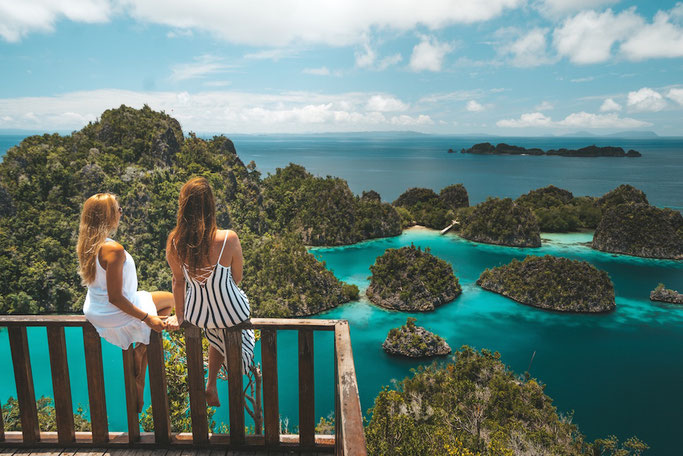 Climate
Climate
The islands have a tropical climate, with temperatures ranging from 20 to 33 °C (68 to 91 °F).
Water temperature in North Raja Ampat ranges 28° to 30°C (82° to 86°F) (Water temperature chart in North Raja Ampat), while in the South in Misool, it ranges 26° to 28°C (79° to 82°F) (Water temperature chart in Misool)
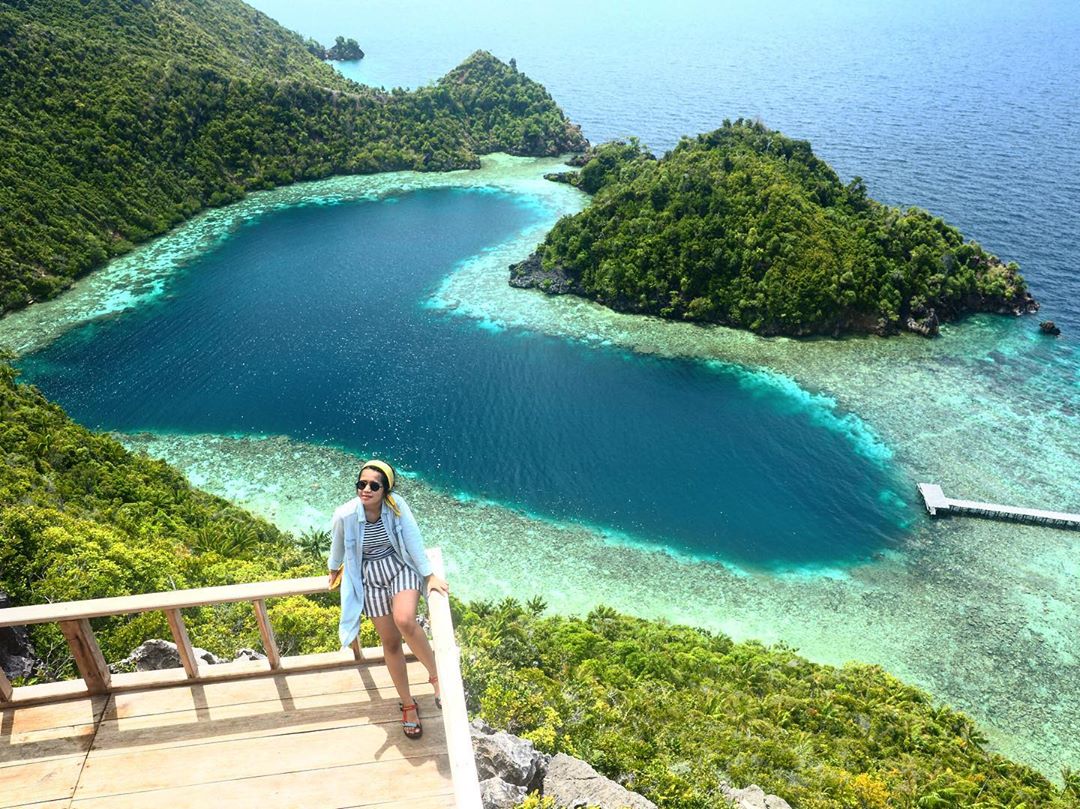 Terrestrial
Terrestrial
The islands are part of the Vogelkop-Aru lowland rain forests ecoregion. The rain forests that covers the islands is the natural habitat of many species of birds, mammals, reptiles and insects. Two species of bird-of-paradise, the red bird-of-paradise (Paradisaea rubra) and Wilson’s bird-of-paradise (Diphyllodes respublica), are endemic to the islands of Waigeo, Gam, and Batanta.
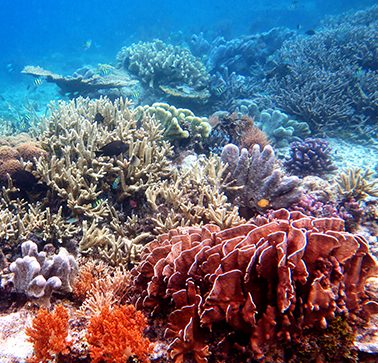 Marine
Marine
Raja Ampat is considered the global center of tropical marine bio-diversity and is referred to as The Crown Jewel of the Bird’s Head Seascape, which also includes Cenderawasih Bay and Triton Bay. The region contains more than 600 species of hard corals, equaling about 75 percent of known species globally, and more than 1,700 species of reef fish – including on both shallow and mesophotic reefs.
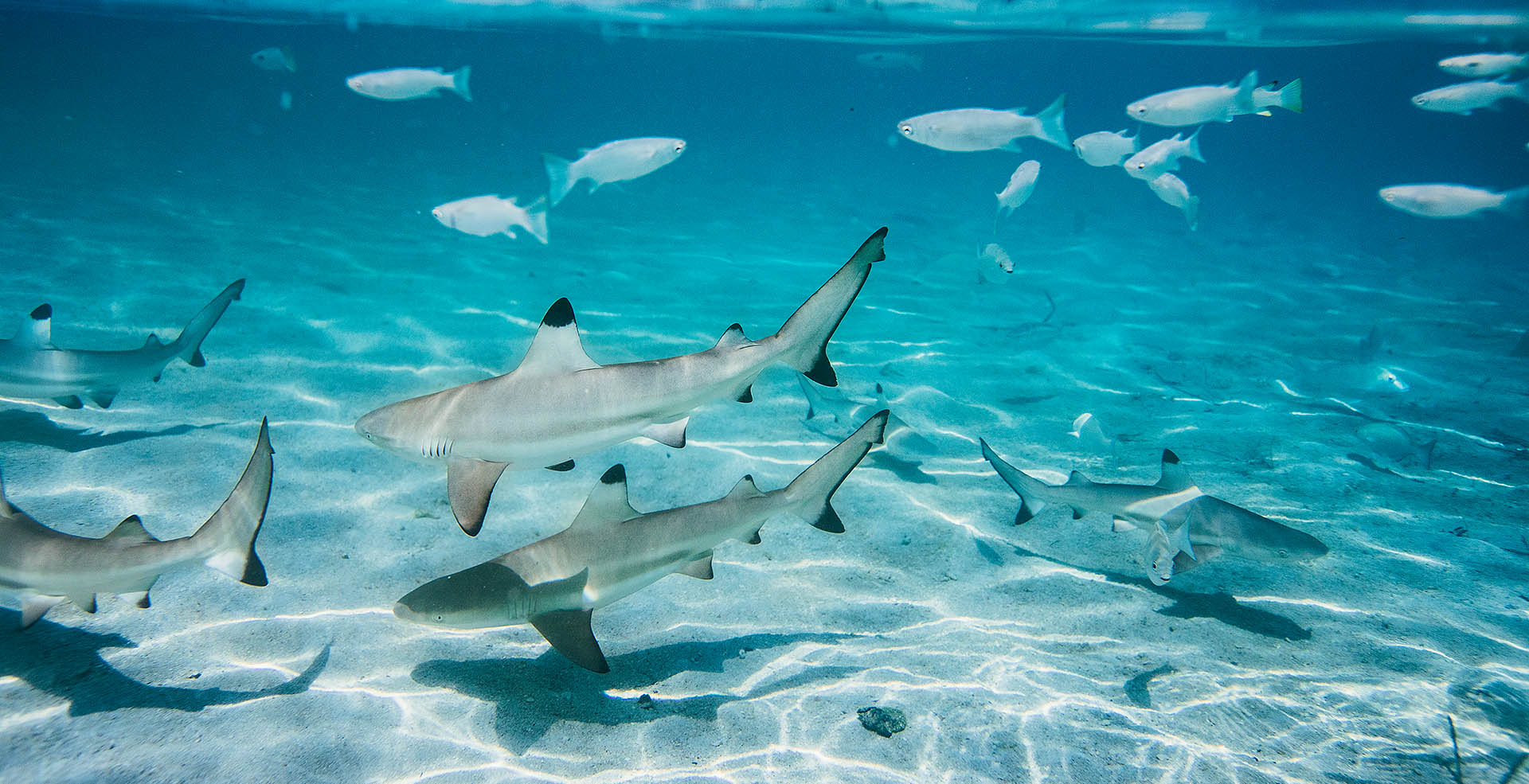 Compared to similar-sized ecosystems elsewhere in the world, this makes Raja Ampat’s biodiversity the richest in the world. Endangered and rare marine mammals such as Dugongs, whales (such as blue or/and pygmy blue, bryde’s, less known omura’s, sperm), dolphins, and orcas occur here.
Compared to similar-sized ecosystems elsewhere in the world, this makes Raja Ampat’s biodiversity the richest in the world. Endangered and rare marine mammals such as Dugongs, whales (such as blue or/and pygmy blue, bryde’s, less known omura’s, sperm), dolphins, and orcas occur here.
In northeast region of Waigeo island, local villagers have been involved in turtle conservation initiatives by protecting nests or relocating eggs of leatherback, olive ridley and hawksbill turtles. Their works are supported by local government, and NGOs.
 Community
Community
The people of the Raja Ampat Islands are generally traditional fishermen who live in small villages located far apart and from different islands. They are a friendly community that welcomes guests from outside, especially if we bring gifts for them in the form of areca nuts or candy.
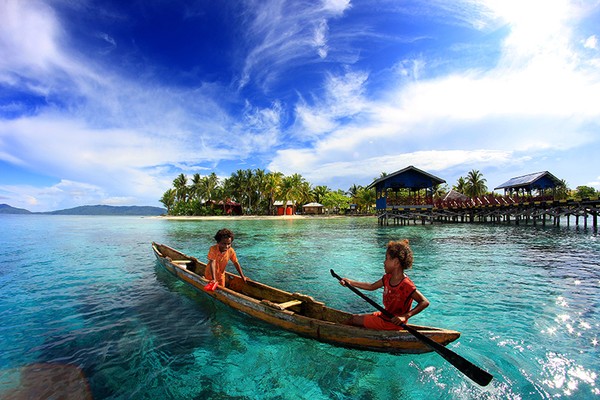 This item became a kind of ‘indian peace pipe’ in Raja Ampat. The show chat over eating betel nut also known as “Para-Pinang” often takes turns throwing mobs at one another, the local term for funny stories.
This item became a kind of ‘indian peace pipe’ in Raja Ampat. The show chat over eating betel nut also known as “Para-Pinang” often takes turns throwing mobs at one another, the local term for funny stories.
They are Muslims and Christians and often within one family or clan there are members who embrace one of the two religions. This makes the people of Raja Ampat still harmonious despite their different beliefs.
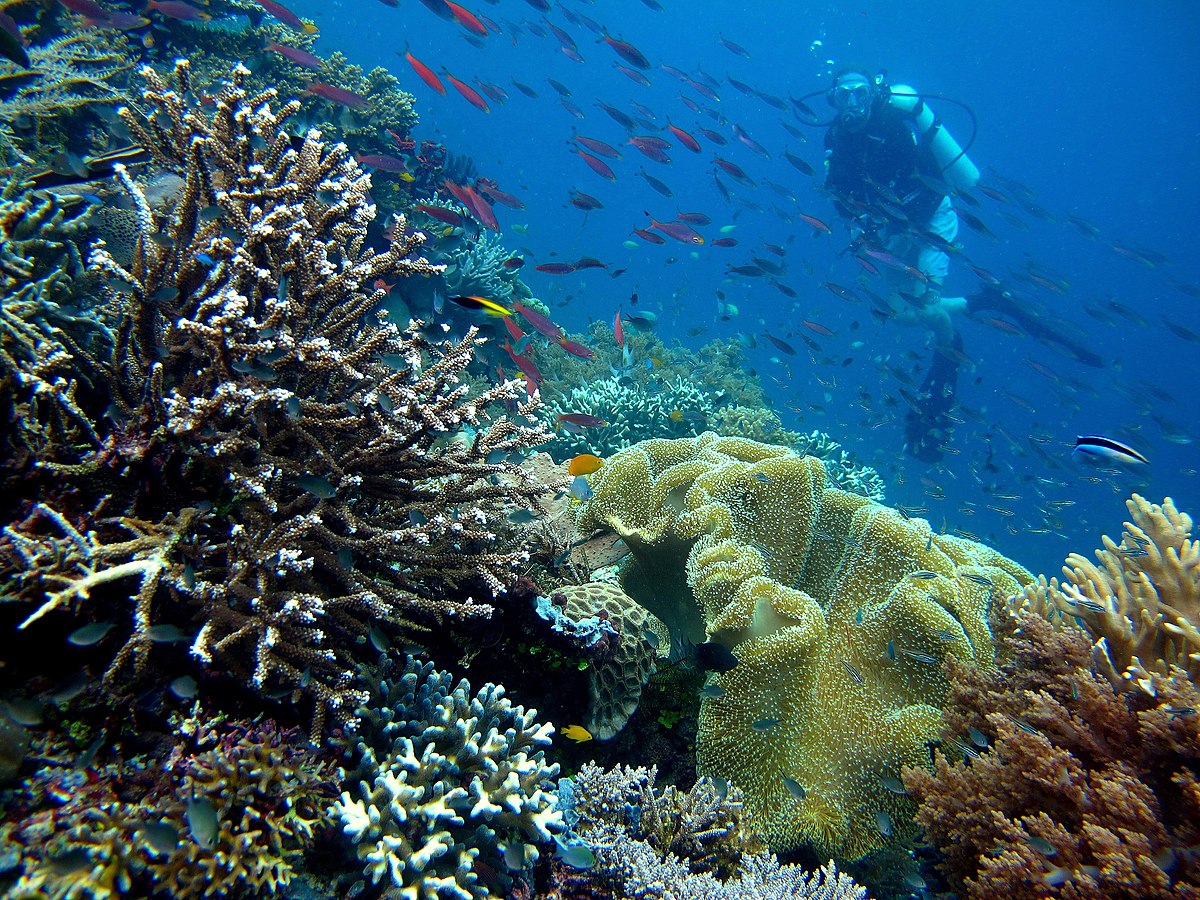 Wealth of natural resources
Wealth of natural resources
Raja Ampat Islands is a place that has the potential to be used as a tourist attraction, especially diving tourism. According to various sources, the waters of the Raja Ampat Islands are one of the 10 best diving sites in the world. In fact, it may also be recognized as number one for the completeness of underwater flora and fauna at this time.
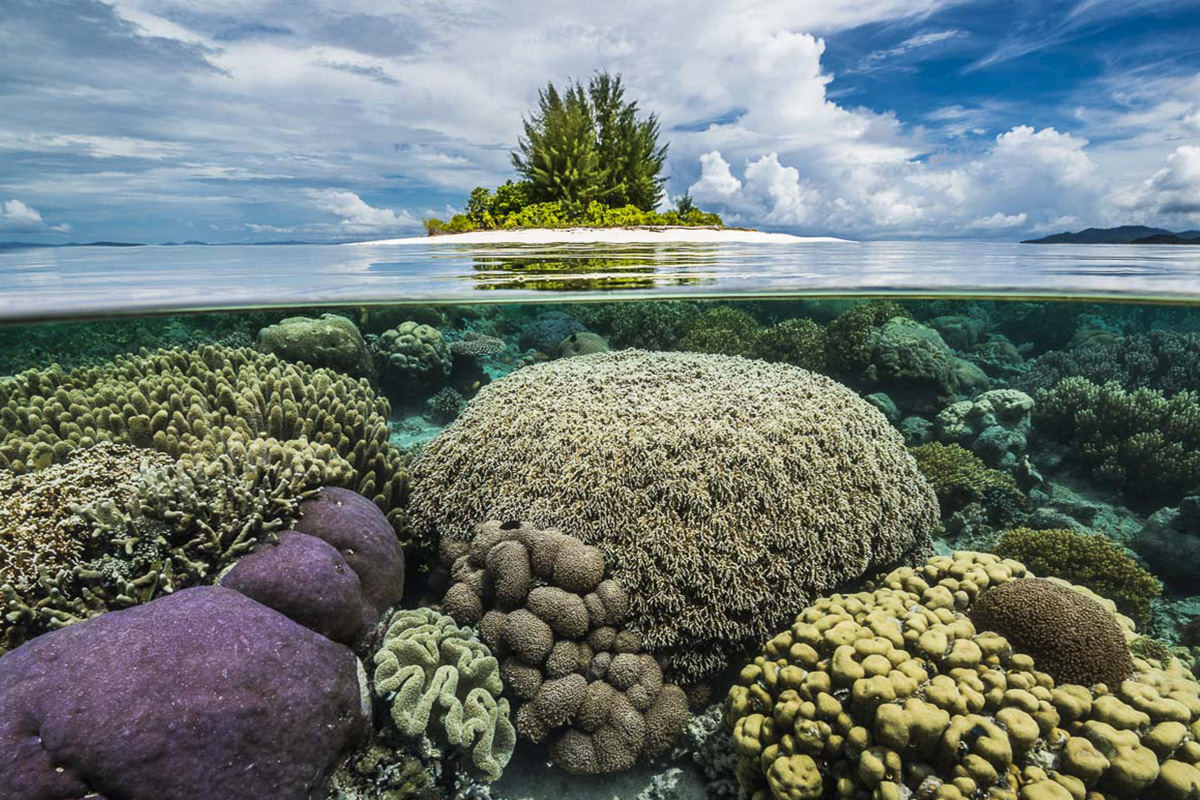 Dr. John Veron, an experienced coral expert from Australia, for example, said in a website that the Raja Ampat Islands, which are located at the westernmost tip of Papua Island, about 50 miles northwest of Sorong, have the best coral areas in Indonesia. About 450 species of coral were identified during the two weeks of research in the area.
Dr. John Veron, an experienced coral expert from Australia, for example, said in a website that the Raja Ampat Islands, which are located at the westernmost tip of Papua Island, about 50 miles northwest of Sorong, have the best coral areas in Indonesia. About 450 species of coral were identified during the two weeks of research in the area.
A team of experts from Conservation International, The Nature Conservancy, and the National Oceanographic Institute (LON) Indonesian Institute of Sciences (LIPI) conducted rapid assessments in 2001 and 2002. As a result, they noted that there were more than 540 types of hard corals in these waters (75% of the total species in the world), more than 1,000 species of reef fish, 700 species of molluscs, and the highest record for gonodactyloid stomatopod crustaceans. This makes 75% of the world’s coral species in Raja Ampat. No place with the same area has this number of coral species.
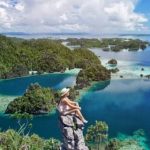

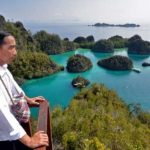
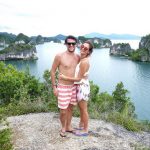
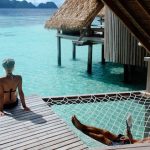

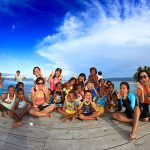
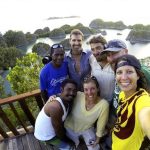
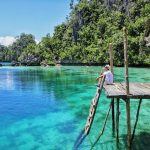
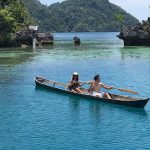

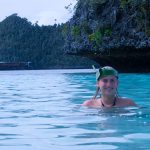

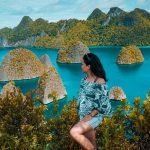













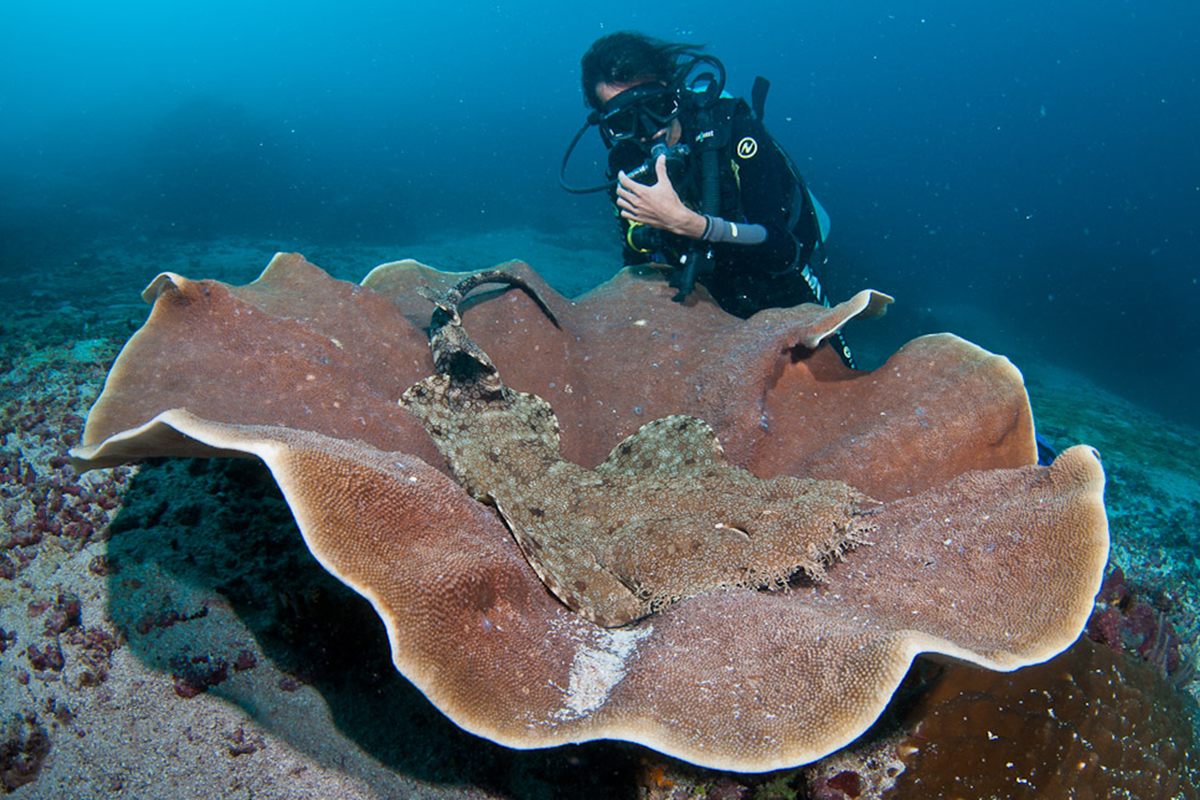 There are several coral reef areas that are still in very good condition with a live coral cover percentage of up to 90%, namely in the Dampier Strait (the strait between Waigeo Island and Batanta Island), Kofiau Islands, Southeast Misool Islands and Wayag Islands. The types of coral reefs in Raja Ampat are generally fringing reefs with gentle to steep contours.
There are several coral reef areas that are still in very good condition with a live coral cover percentage of up to 90%, namely in the Dampier Strait (the strait between Waigeo Island and Batanta Island), Kofiau Islands, Southeast Misool Islands and Wayag Islands. The types of coral reefs in Raja Ampat are generally fringing reefs with gentle to steep contours.
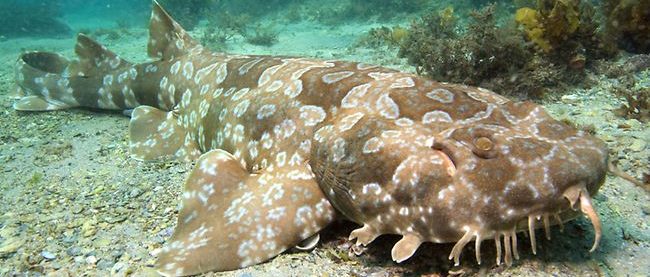 But also found the type of atoll and type of burn or taka. In some places such as in Saondarek village, when the tide is lowest, you can see a stretch of coral reef without diving and with its own adaptation, the coral can still live even though it is in the open air and exposed to direct sunlight.
But also found the type of atoll and type of burn or taka. In some places such as in Saondarek village, when the tide is lowest, you can see a stretch of coral reef without diving and with its own adaptation, the coral can still live even though it is in the open air and exposed to direct sunlight.
 Unique species that can be found while diving are several types of dwarf seahorses, wobbegongs, and manta rays. There is also an endemic fish of Raja Ampat, namely Eviota Raja, which is a type of gobbie fish. At Manta point which is located in the Arborek of the Dampier Strait, you can dive accompanied by some tame manta rays like when you dive in the Derawan Islands, East Kalimantan.
Unique species that can be found while diving are several types of dwarf seahorses, wobbegongs, and manta rays. There is also an endemic fish of Raja Ampat, namely Eviota Raja, which is a type of gobbie fish. At Manta point which is located in the Arborek of the Dampier Strait, you can dive accompanied by some tame manta rays like when you dive in the Derawan Islands, East Kalimantan.
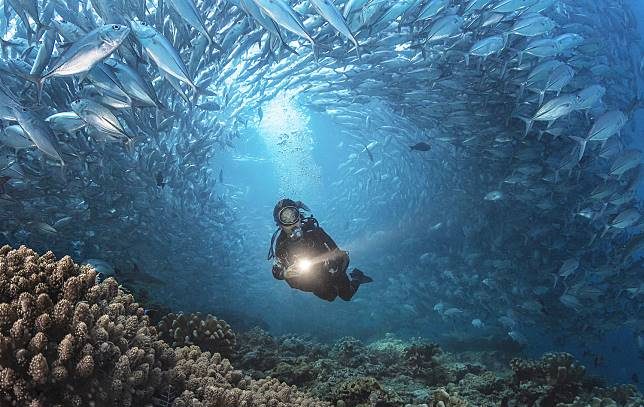 If you dive at Cape Kri or Chicken Reef, you can be surrounded by thousands of fish. Sometimes a collection of tuna fish, giant trevallies and snappers. But what is tense if we are surrounded by a collection of barracuda fish, even though in fact it is relatively harmless (which is dangerous if we meet a solitary barracuda or alone).
If you dive at Cape Kri or Chicken Reef, you can be surrounded by thousands of fish. Sometimes a collection of tuna fish, giant trevallies and snappers. But what is tense if we are surrounded by a collection of barracuda fish, even though in fact it is relatively harmless (which is dangerous if we meet a solitary barracuda or alone).
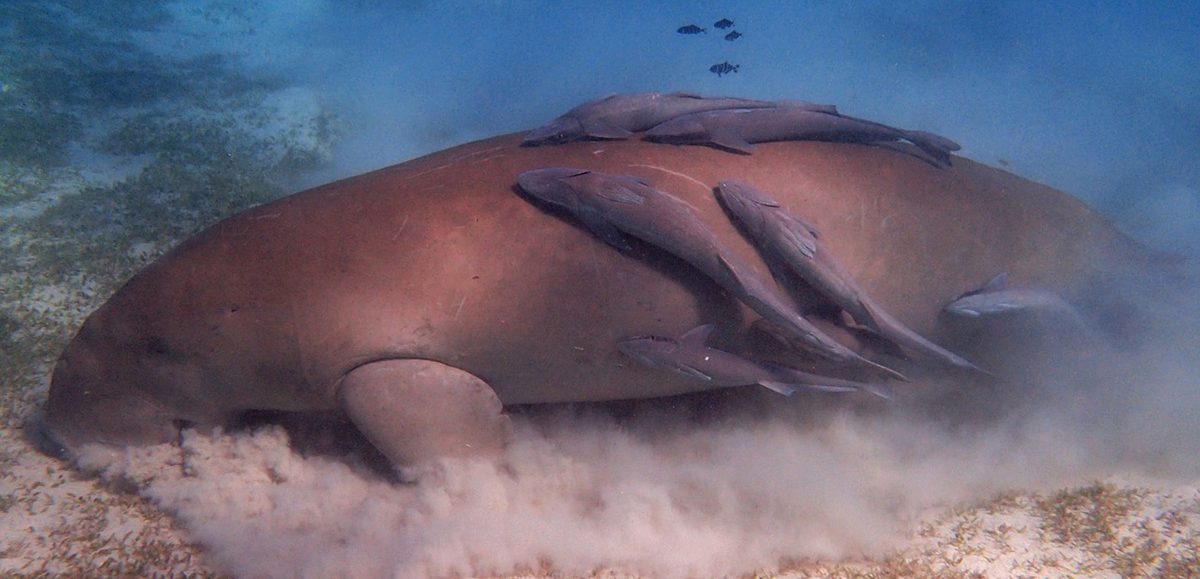 Reef sharks are also often seen, and if you are lucky you can also see turtles eating sponges or swimming around you. In some places, such as in Salawati, Batanta and Waigeo, you can see Dugong or mermaids.
Reef sharks are also often seen, and if you are lucky you can also see turtles eating sponges or swimming around you. In some places, such as in Salawati, Batanta and Waigeo, you can see Dugong or mermaids.
Due to its many islands and narrow straits, most of the dive sites have strong currents at any given time. It is also possible to do a drift dive, dive while following the strong currents with crystal clear water while breaking through a collection of fish.
Raja Ampat
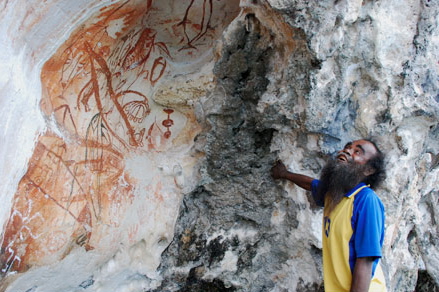 Prehistoric and historical relics
Prehistoric and historical relics
In the Misool cluster area, prehistoric remains were found in the form of handprints imprinted on rock walls. Uniquely, these handprints are very close to sea level and are not in a cave. It is estimated that the age of these handprints is around 50,000 years and is part of a series of directions for the distribution of humans from the western region of the archipelago to Papua and Melanesia.
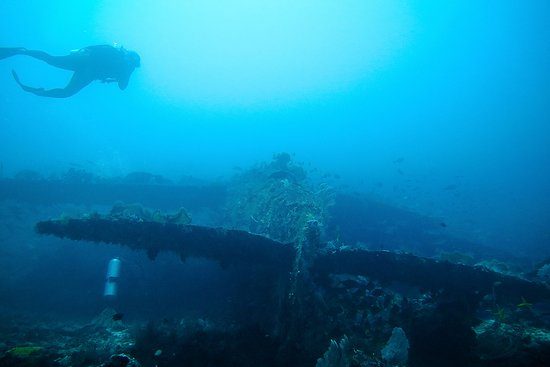 The remains of World War II wrecks can be found in several dive sites, such as on Wai Island.
The remains of World War II wrecks can be found in several dive sites, such as on Wai Island.
Tourism
Raja Ampat can be reached by plane from Jakarta or Bali to Sorong via Makassar or Ambon and Manado. The flight takes approximately 6 hours. From Sorong, there are two ways to go to Raja Ampat: Take a tour with a pinisi boat, or stay at the Raja Ampat Dive Lodge resort.
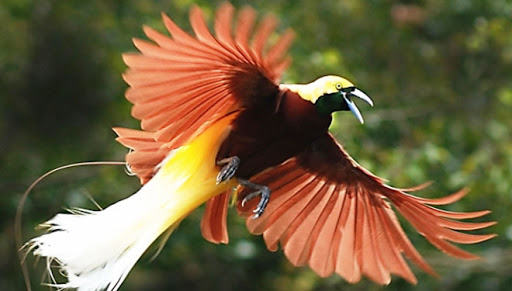 Most tourists who come to Raja Ampat today are divers. For non-divers, there are a number of white sandy beaches, karst island clusters and endemic flora and fauna such as red Cendrawasih, Wilson Cendrawash, Maleo waigeo, various Parrots and Nuri, waigeo cuscus, and various types of orchids.
Most tourists who come to Raja Ampat today are divers. For non-divers, there are a number of white sandy beaches, karst island clusters and endemic flora and fauna such as red Cendrawasih, Wilson Cendrawash, Maleo waigeo, various Parrots and Nuri, waigeo cuscus, and various types of orchids.
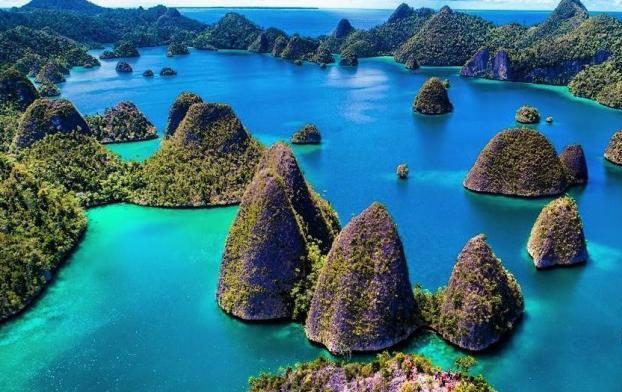 Conservation efforts
Conservation efforts
To preserve the underwater of the Raja Ampat Islands, conservation efforts are needed in this area. There are two international organizations that are concerned about the preservation of Raja Ampat’s natural resources, namely CI (Conservation International) and TNC (The Nature Conservancy).
The government itself has designated the sea around South Waigeo, which includes small islands such as Gam, Mansuar, Yeben group and Batang Pele group, to be legalized as a Marine Wildlife Reserve. According to the Minister of Forestry Decree No. 81 / KptsII / 1993, this area reaches 60,000 hectares.
In addition, several other marine areas have been proposed as conservation areas. Respectively, the South Misool Island Marine Wildlife Refuge, Kofiau Island Sea, Asia Island Sea, Sayang Island Sea and Ayau Island Sea.
